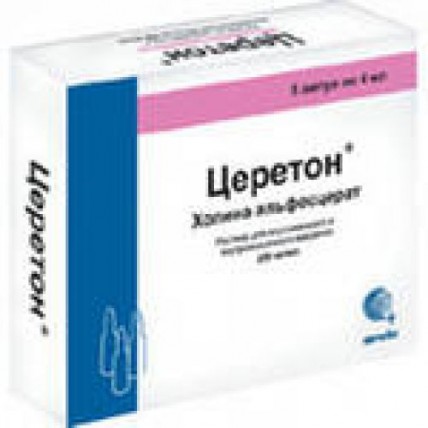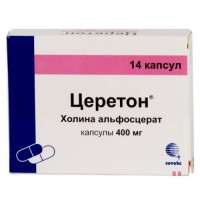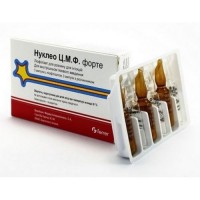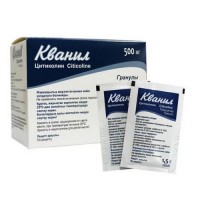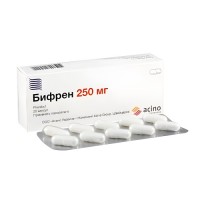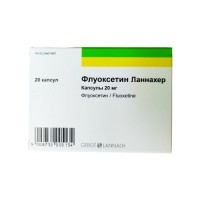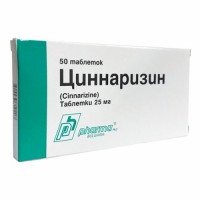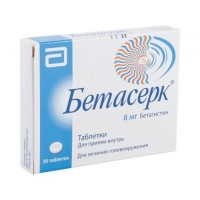Cereton® 250 mg/ml 4ml 5's solution for intramuscular and intravenous administration
- $55.60
Structure
One ampoule contains
active substance - L-Alpha glycerylphosphorylcholine (alpha-GPC, choline alfoscerate) in terms of 100% substance - 1000 mg,
excipient - water for injection
Pharmacological properties
Pharmacokinetics
It easily penetrates the blood-brain barrier, 85% is excreted by the lungs as carbon dioxide, the rest (15%) is excreted by the kidneys and through the intestines.
Pharmacodynamics
Nootropic agent. Central anticholinergic stimulant, which contains 40.5% of metabolically protected choline. Metabolic protection promotes the release of choline in the brain. Provides the synthesis of acetylcholine and phosphatidylcholine in neuronal membranes, improves blood flow and enhances metabolic processes in the central nervous system, activates the reticular formation. Increases the linear velocity of blood flow on the side of traumatic brain injury, promotes the normalization of the space-time characteristics of spontaneous bioelectric activity of the brain, regression of focal neurological symptoms and restoration of consciousness; has a positive effect on the cognitive and behavioral responses of patients with cerebrovascular diseases (discirculatory encephalopathy and residual cerebral circulation disorders). It has a preventive and corrective effect on the pathogenetic factors of the involutionary psychoorganic syndrome, changes the phospholipid composition of neuronal membranes and reduces cholinergic activity. Stimulates the dose-dependent release of acetylcholine under physiological conditions; participating in the synthesis of phosphatidylcholine (membrane phospholipid), it improves synaptic transmission, plasticity of neuronal membranes, and receptor function. It does not affect the reproductive cycle and does not have a teratogenic, mutagenic effect.
Indications for use
- acute and recovery periods of severe traumatic brain injury and ischemic stroke, recovery period of hemorrhagic stroke, occurring with focal hemispheric symptoms or symptoms of brain stem damage
- psychoorganic syndrome against the background of degenerative and involutional brain changes
- cognitive disorders (impaired mental function, memory, confusion, disorientation, decreased motivation, initiative and ability to concentrate), including dementia and encephalopathy
- senile pseudomelancholia.
Method of administration and dosage
In acute conditions, it is administered intravenously (slowly) or deeply intramuscularly (slowly), 1000 mg (1 ampoule) per day for 10-15 days.
Side effects
- dryness of the oral mucosa, nausea, constipation, diarrhea
- headache, dizziness, drowsiness, insomnia, aggressiveness, anxiety
- allergic reactions (rash, urticaria)
- increased urination
- pain at the injection site
Contraindications
- hypersensitivity to the drug
- hemorrhagic stroke (acute stage)
- pregnancy and lactation
Drug interactions
No significant interactions with other drugs have been identified.
Special instructions
Application in pediatrics
There is not enough clinical experience on the use of the drug in pediatric practice. It is not recommended to use the drug in pediatrics.
Features of the effect of the drug on the ability to drive a vehicle or potentially dangerous mechanisms
Although there is no data that Cereton® has a negative effect on the rate of psychomotor reactions, during the period of treatment, care must be taken when driving vehicles or potentially dangerous mechanisms that require increased concentration of attention and speed of psychomotor reactions.
Overdose
Symptoms: increased side effects of the drug.
Treatment: symptomatic therapy.
Storage conditions
Store in a dark place at a temperature not exceeding + 25 ° C.
Keep out of the reach of children!
Shelf life - 2 years
Do not use after the expiration date.
